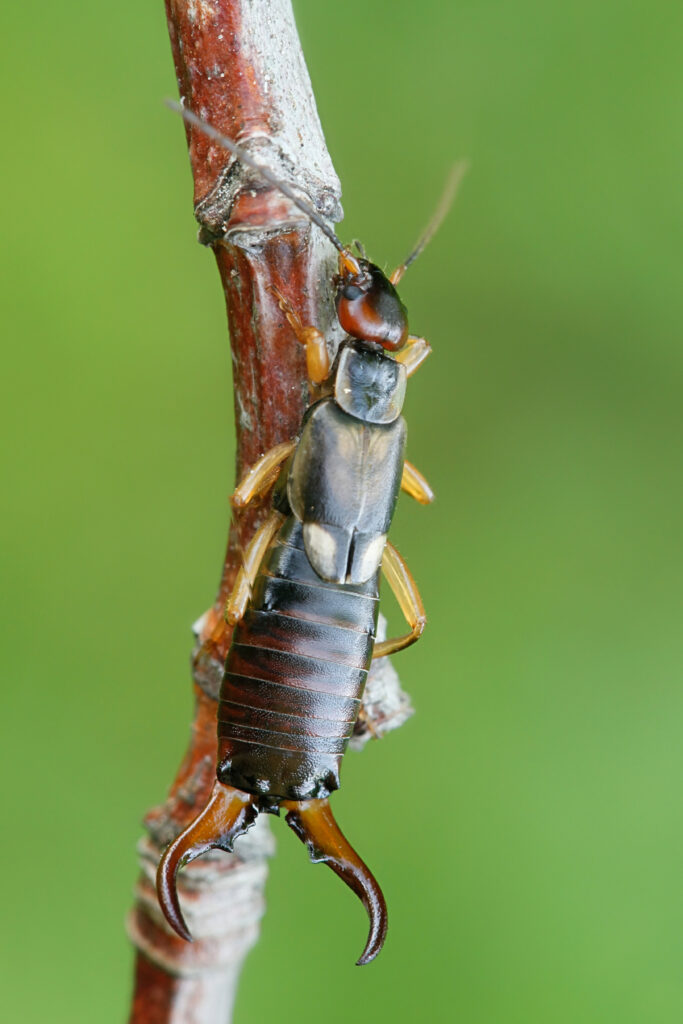These nocturnal insects, known for their pincers and preference for dark, damp environments, can become unwelcome guests when they invade homes or gardens. Our expert team specializes in effective earwig control services, ensuring a thorough and comprehensive resolution to earwig-related concerns.
Fascinating Facts About Earwigs

Earwigs are intriguing insects known for their distinctive pincers, or forceps, located at the end of their abdomen. These pincers are used for defense, capturing prey, and even during mating rituals. Contrary to the myths, earwigs do not crawl into human ears or burrow into brains; the name “earwig” comes from the Old English word “ēarwicga,” which means “ear creature,” likely due to the shape of their wings, which resemble a human ear when unfolded. Earwigs are nocturnal and prefer dark, moist environments, such as under rocks, mulch, or in garden debris, where they feed on a variety of plant material, fungi, and smaller insects.
Earwigs are also notable for their unique parenting behavior, which is quite rare among insects. The female earwig demonstrates maternal care by guarding her eggs and newly hatched young, known as nymphs, for several weeks until they are mature enough to fend for themselves. During this time, the mother cleans the eggs to prevent mold and brings food to her offspring. This maternal care helps increase the survival rate of earwig nymphs, making them surprisingly attentive parents in the insect world.
Interesting About Earwigs
Earwigs are fascinating insects, not just for their intimidating pincers but also for their role in the ecosystem. These pincers, which are curved in males and straight in females, serve multiple purposes: they help capture prey, defend against predators, and are even used in mating battles with rivals. Earwigs are omnivores and scavengers, feeding on a variety of materials like decaying organic matter, small insects, and plant leaves. While they can occasionally damage garden plants, they also help control pest populations by preying on aphids, mites, and other small insects.
Another intriguing aspect of earwigs is their ability to produce foul-smelling liquid from glands located near their abdomen as a defense mechanism against predators. They also have wings, although they rarely fly. Instead, they prefer to crawl quickly to escape threats. Earwigs are nocturnal and are most active at night, hiding in cool, damp places during the day. Their adaptability to different environments and behaviors make them a successful species found on every continent except Antarctica.
Understanding Earwig Behavior
Earwigs are small insects characterized by elongated bodies, pincers, and membranous wings. While they prefer outdoor habitats, earwigs may enter homes seeking shelter, especially during hot or dry conditions. Identifying earwig infestations early is crucial for preventing potential nuisances.
Signs of Earwig Presence
Identifying the presence of earwigs on your property is crucial for prompt intervention. Common signs include:
Our Earwig Control Services
At All Creatures Pest Control, we offer comprehensive earwig control services tailored to the specific needs of your property. Our approach includes:
Why Choose All Creatures Pest Control for Earwig Issues?
Contact Us for Earwig Control
If you suspect earwig activity on your property or require assistance with earwig control, don’t hesitate to reach out to All Creatures Pest Control. Our team is ready to provide prompt and effective solutions to restore the comfort of your home. Call us at 281-358-8914 or Email craig@allcreaturespestcontrol.com to schedule a consultation. Your peace of mind begins with our expertise in pest management.